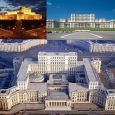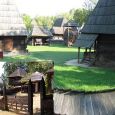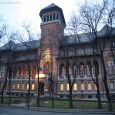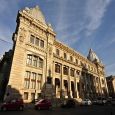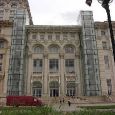Bucharest
Advertisement
By plane
Bucharest has reasonable connections with most European capitals and with the largest cities in Romania, but it can be difficult to find a direct flight to Bucharest from outside of Europe or the Middle East.
Discount air companies have been operating flights to Bucharest since 2004, but it was only in late 2006 - early 2007 that the number of such flights seriously began to grow, so at this point there are low-costs flights to to various destinations in Italy, Spain, Germany, France, the UK, Belgium, Hungary, Latvia, Slovakia, Turkey and Austria. Wizz air has connections from London.
By bus
Buses are a good option to get to Bucharest if coming from Moldova, Turkey, Greece and to some extent Bulgaria, given the low frequency and speeds of trains between these countries and Romania.
By train
Bucharest is linked through direct daily trains to all neighboring countries’ capitals (Belgrade, Budapest, Chisinau, Kiev, Sofia), as well as to Vienna, Venice, Thessaloniki, Istanbul, Moscow and of course to main cities in all of Romania’s 41 counties.
By car
The city’s entrances from the north (the E60 road coming from Brasov), west (the A1 highway from Pitesti), east (the A2 (Sun) highway from Constanta), south (the E20 road from Giurgiu) and the avenues in the city center are very crowded, especially at rush hours. Inside the city there are few parking spaces and some of the secondary streets are in bad condition.
Advertisement
Parliament Palace
In the center of Bucharest, near Piata Unirii (Union Plazza), the tourist can see the world's second largest building (after the US Pentagon), formerly named "Casa Poporului" (People's House). The building, which was built in 1984 by Nicolae Ceausescu, spans 12 stories, 3100 rooms and covers over 330,000 sq m. 1/9 of Bucharest was reconstructed to accommodate this magnificent massive building and its surroundings. There are 30-45 minute tours every half hour which lead through the building's vast collection of marble rooms and culminates in an impressive view from Nicolae Ceausescu's balcony. The marble and all the original decorations are 100% from Romania. Tickets cost 15 RON and are free for students (proof required). The tourist entrance is on the north side of the building.
Village Museum
An original open air museum created in 1934, it currently has around 300 traditional buildings (including churches, workshops, mills etc.) plus furniture, pottery, clothing gathered from villages in every region of the country in an effort to showcase the traditional way of life of the Romanians. Occasionally hosts folkloric and traditional crafts festivals. Entry fee 3ron for adult, 1.5ron for student, closes at 9PM in the summer, Soseaua Kiseleff, 28-30.
Museum of the Romanian Peasan
Museum of the Romanian Peasant also dedicated to the traditional way of life, it focuses mainly on traditional interior decoration, tools, clothing and artifacts. Again, it sometimes hosts folkloric and traditional crafts festivals. Very interesting, touching exhibit about one's grandma. With hidden rooms to surprise you. Entry 6ron for adult, 3ron for student
National Museum of Contemporary Art
National Museum of Contemporary Art Recently opened inside a converted wing of the Palace of the Parliament, in what had been the private apartments of Ceausescu, the museum features fresh exhibitions from Romania's burgeoning art scene.
National History Museum
National History Museum located in a neoclassical late 19th century building, has exhibits documenting the evolution of society on Romania’s territory from the Paleolithic until today, a replica of Trajan’s Column in Rome and a very interesting numismatics collection. It is undergoing some remodeling and only two exhibitions are open to the public as of June 2009
Stavropoleos Church
Stavropoleos Church built in the early 18th century, has some stunning decorative sculpture and amazing frescoes. A little jewel. In the old center area.
May - September
Information not available
Advertisement

